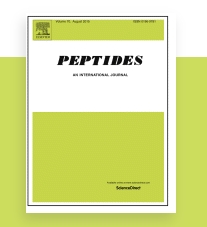Sanchis-Gomar F1, Alis R2, Rampinini E3, Bosio A3, Ferioli D4, La Torre A5, Xu J6, Sansoni V7, Perego S7, Romagnoli M8, Lombardi G7
1,Research Institute of the Hospital 12 de Octubre (“i+12”), Madrid, Spain;2, Research Institute “Dr. Viña Giner”, Molecular and Mitochondrial Medicine, Catholic University of Valencia San Vicente Mártir, Valencia, Spain; School of Medicine, Catholic University of Valencia San Vicente Mártir, Valencia, Spain;3, Human Performance Laboratory, MAPEI Sport Research Center, Italy;4, Human Performance Laboratory, MAPEI Sport Research Center, Italy; Department of Biomedical Sciences for Health, Università degli Studi di Milano, Milano, Italy;5, Department of Biomedical Sciences for Health, Università degli Studi di Milano, Milano, Italy;6, Sport Rehabilitation Department, Beijing Sport University, Beijing, China;7, Laboratory of Experimental Biochemistry & Molecular Biology, I.R.C.C.S. Istituto Ortopedico Galeazzi, Milano, Italy;8, Research Institute of the Hospital 12 de Octubre (“i+12”), Madrid, Spain; Department of Physical Education and Sports, University of Valencia, Valencia, Spain

Myokines are likely to be involved in the whole-body metabolic adaptive changes that occur in response to regular exercise. We aimed to investigate the association of the two myokines (adropin and apelin) with physical performance in professional soccer players. To this purpose, we analyzed the fluctuations of circulating levels of both adropin and apelin in professional soccer players during a season and evaluated the possible association of these myokines with the performance level. Creatine kinase (CK) and lactate dehydrogenase (LDH) activity as well as iron, transferrin and high-sensitivity C-Reactive protein (hsCRP), ferritin, soluble transferrin receptor (sTfR), free testosterone/cortisol ratio (FTCR), total iron binding capacity (TIBC) were also determined. Fifteen male professional soccer players from an Italian Serie A team were included in this study. Regarding the results of the biochemical analyses, the patterns of changes in the biomarkers of fatigue and inflammation, i.e., HsCRP, CK and LDH reflected the effects of the training throughout the season. No significant changes were observed in adropin, while apelin exhibited variations that seem not to be related with performance. In addition, both adropin and apelin did not represent valuable strategy to assist in the performance assessment of professional soccer players.
Peptides. 2015 Aug;70:32-6. PMID: 25981336 DOI: 10.1016/j.peptides.2015.05.001